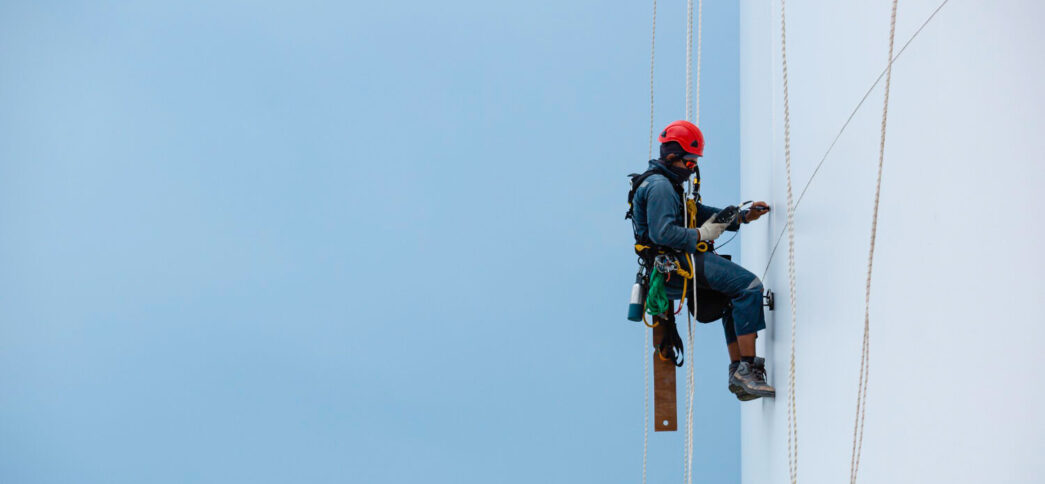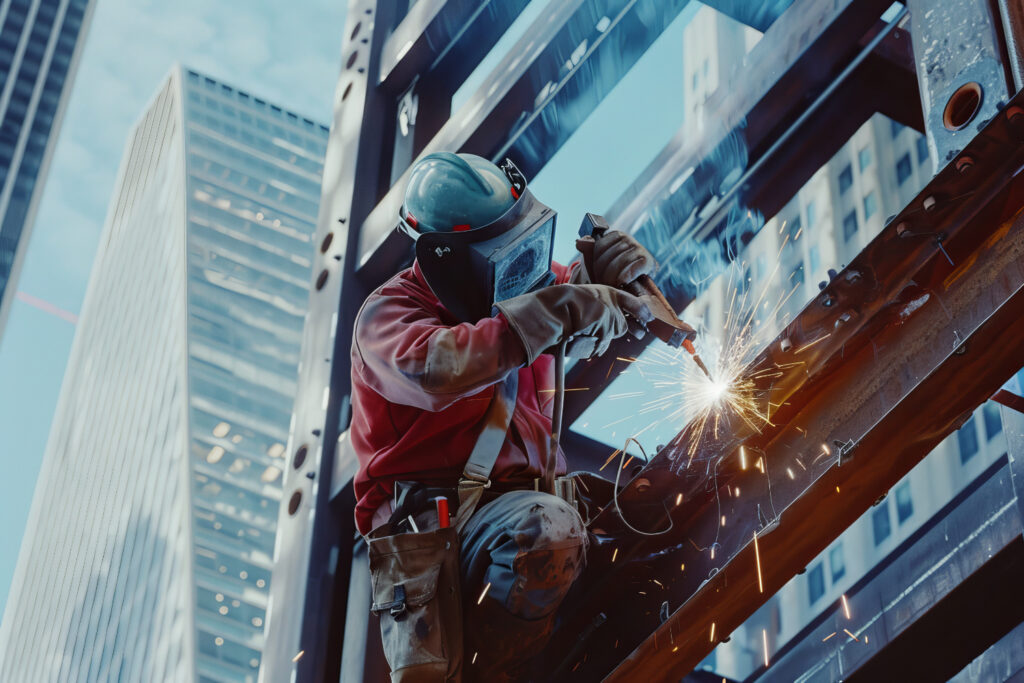Technical Name: TRAINING COURSE NR 35 SAFETY IN WORKING AT HEIGHT – WORKER LEVEL
Reference: 5337
We provide courses and training; We perform Translations and Versions in Technical Language: Portuguese, English, Spanish, French, Italian, Mandarin, German, Russian, Swedish, Dutch, Hindi, Japanese and others consult.
Click on the Link: Criteria for Issuing Certificates in accordance with the Norms
Treinamento Livre Profissionalizante Noções Básicas (Não substitui Formação Acadêmica ou Ensino Técnico)Certificado de conclusão
Curso NR 35 Inglês
Regulatory Programmatic Content:
Goals and Fields of Application;
Use, Conservation and Maintenance of Personal Protective Equipment (PPE);
Collective and individual protection equipments, to reduce impact and fall factors;
Risk of falling of materials and tools;
Practical presentation of safety equipments, for what purpose they are produced, and how to use their strengths and weaknesses;
Communication Systems; Safety Course and Health at Work in English;
Security procedures at Work, Planning, organization and execution of work;
Routine operational procedures of working at heights;
Requirements and documents needed to certify fitness to work at height;
Minimum Security Requirements; Responsibilities of the height team supervisor;
Specific risks of simultaneous work; Potential risks inherent in working at heights and measures to prevent and control;
Requirements for hiring the Rescue Team; Protective measures for working at heights;
Isolation methods and signaling the work area; Security System as slopes (slopes and inclines, etc.);
Practical Assisted Training of difficulties encountered in daily work;
Structural Workplace Assessment Safety Course and Health at Work in English;
Preliminary Risk Analysis (PRA); Preparation of PRA and relevant considerations;
Risk Analysis and impeding working conditions;
Weather and other external influences that may alterthe execution of the service conditions;
Work Permit – WP; Issue; Responsible for authorization; Closing; Traceability; Validity;
Vertical Hierarchy permission to work at height; Safety Course and Health at Work in English;
Basic Rescue Techniques at Heights; Energy absorbers; Typical accidents;
Self-rescue; (Sked stretcher and basket hoisting); Pipelines in emergency situations;
Physiological damage caused by falls; Descent and victim hoisting with and without litter;
Horizontal displacement and access to places away from the stairs;
Fall arrest devices; Establishment of systems and anchor points; Fall Factor and impact strength;
With hoisting cable guide; Basic Techniques and Planning Rescue at Heights;
Knots Fixation; Rappel Notions (practice vertical lifeline and falls locks);
Organized rescue and transfer lines, simulations with drivers assembly;
Anchoring System (attachment points); Counter weight Systems; (Pulleys);
Load Reduction Systems Pulleys; Climbdown Security Systems (brakes and knots security);
Ascent Security Systems; Basic First Aid; Complement; Practical Exercises;
Perception Risk and Facts inflicted on people; Safety Impact and Behavior Facts;
Fear Fact; Risk Habituation and Consequences; The matter and knowledge of task;
Knowledge of Ergonomic; Work Station Analysis; Ergonomics Risk; Final Test Teory and Practical;
Participation Certification;
Curso NR 35 Inglês
Level 01-08 Hours (Minimum)
Level 02-16 Hours
Level 03-24 Hours
Working at Heights (Supervisor Level) – 40 Hours
Update (Refresher):
Minimum workload = 08 hours/class
Update (Refresher): BIENNIAL
NR-35.3.3 The employer must conduct periodic training every two years and whenever any of the following situations occur:
a) change in work procedures, conditions or operations;
b) event indicating the need for new training;
c) return from absence from work for a period exceeding ninety days;
d) change of company.
35.3.3.1 The periodic training every two years must have a minimum workload of eight hours, according to the program content defined by the employer.
Curso NR 35 Inglês
Curso NR 35 Inglês
Referências normativas quando aplicáveis aos dispositivos aplicáveis e suas atualizações:
NR 35 – Trabalho em Altura; (Work at height);
ABNT NBR 14626 – Equipamentos de Proteção Individual contra Quedas de Altura – Dispositivo antiqueda deslizante guiado por cabo flexível; (Personal Protective Equipment against Falls from Height – Sliding fall arrester guided by a flexible cord;)
ABNT NBR 14627 – Equipamentos de Proteção Individual contra Quedas de Altura – Trava-queda guiado em linha rígida; (Personal Protective Equipment against Falls from Height – Rigid-line guided fall arresters);
ABNT NBR 14628 – Equipamentos de proteção individual contra quedas de altura – Trava-queda retrátil; (Personal protective equipment against falls from height – Retractable fall arresters);
ABNT NBR 14629 – Equipamentos de Proteção Individual contra Quedas de Altura – Absorvedor de energia; (Personal Protective Equipment against Falls from Height – Energy absorber);
ABNT NBR 16489 – Sistemas e equipamentos de proteção individual para trabalhos em altura – Recomendações e orientações para seleção, uso e manutenção; (Personal protective systems and equipment for work at a height – Recommendations and guidelines for selection, use and maintenance);
Protocolo – Diretrizes American Heart Association;
ISO 10015 – Gestão da qualidade – Diretrizes de treinamento; (Quality management – Training guidelines);
ISO 45001 – Sistemas de gestão de segurança e saúde ocupacional – Requisitos com orientação de uso; (Occupational health and safety management systems – Requirements with guidance for use);
Note: This Service meets exclusively the requirements of the Special Secretariat of Social Security and Labor (SEPRT); when dealing with services to other Agencies, please inform at the time of the request.
Curso NR 35 Inglês
Curso NR 35 Inglês
Clarification: The purpose of our course is to enhance the student’s knowledge step by step on how to prepare a Technical Report; what enables the student to sign as a Technical Responsible are, first and foremost, the attributions that they have before their Professional Council (CREA).
Our pedagogical project follows the guidelines imposed by Regulatory Norm No. 1.
After payment confirmation, Purchase Order, Contract signed between the parties, or any other form of closing confirmation, the didactic material will be released within 72 business hours (up to 9 days), due to the adaptation of the programmatic content and adequacy to the Technical Standards applicable to the scenario expressed by the Contractor; as well as other adjustments to the didactic material, carried out by our Multidisciplinary Team for technical language according to the nationality of the student and specific Operational and Maintenance Instruction Manuals for the activities that will be carried out.
PDCA Cycle (Plan-Do-Check-Act)
The approach of the SSO management system applied in this document is based on the concept of Plan-Do-Check-Act (PDCA).
The PDCA concept is an iterative process used by organizations to achieve continuous improvement. It can be applied to a management system and to each of its individual elements, as follows:
a) Plan: Determine and evaluate SSO risks, opportunities, other risks, and other opportunities, establish the necessary SSO objectives and processes to ensure results according to the organization’s SSO policy;
b) Do: Implement the processes as planned;
c) Check: Monitor and measure activities and processes in relation to the SSO policy and SSO objectives and report results;
d) Act: Take action to continuously improve SSO performance to achieve the intended results.
Occupational health and safety management systems – Requirements with guidance for use
Stakeholder – Person or organization that can affect, be affected or perceive itself affected by a decision or activity.
The justification for the Price and Value relationship:
The pricing of any service requires expertise related to the business world, and the concept of Value is qualitative, directly linked to the potential for transformation existing in that content. The service has more value when it has added professional knowledge and secrets, and the price is a consequent variable of value, whose objective is to transmit it in numbers. Thus, the greater the added value to the content, the higher its fair price will be. Therefore, we do not authorize the use of our Proposals as counterproof of closing with third parties of lower interest, Quality, Safety, Efficiency, and Excellence in all senses are our values.
Causes of Work Accidents:
Lack of employer alertness;
Lack of employee care;
Even after carrying out all mandatory Safety and Occupational Health Trainings and Reports in case of a work accident, the employer will be subject to processes such as:
Police Inquiry – Civil Police;
Expertise through Criminalistic Institute;
Investigation Procedure with Regional Labor Delegation;
Public Civil Inquiry before the Labor Public Prosecutor’s Office to verify if other workers are not at risk;
INSS will question the cause of the accident that could have been avoided and refuse to pay benefits to the employee;
Family members may file a Lawsuit in Labor Court claiming Moral, Material, Luxation damages, etc.;
Procedural Tsunami forcing Employers to generate Defense Strategies even if they are right;
Although the Labor Delegation Law does not provide for “culpa en vigilando,” but only for responsibility for delivering equipment, it is worth noting that the Employer is also responsible for monitoring;
When an accident occurs, besides destroying all “good humor” of relationships between employees or also the very serious problem of defending oneself from a series of procedures at the same time, it is worth investing in prevention;
The Employee cannot perform activities exposed to risks that may compromise their safety and health. Therefore, the Employer may be held criminally and civilly liable.
Curso NR 35 Inglês
Know more: Curso NR 35 Inglês:
Working at heights is a high-risk activity that requires specialized knowledge and training. The NR 35 standard establishes the guidelines for the safe execution of work at heights in Brazil. The course on working at heights is mandatory for all professionals who perform activities at heights above 2 meters from the ground level.
The course covers topics such as risk assessment, use of personal protective equipment, rescue techniques, and emergency procedures. It also provides practical training on the proper use of equipment and tools used in working at heights.
The course duration is 8 hours and must be conducted by a qualified instructor. Upon completion, participants receive a certificate of completion that is valid for two years.
Employers must ensure that their employees have completed the course before starting any work at heights. It is also important to provide regular refresher training to ensure that workers are up to date with the latest safety standards and techniques.
Investing in the training of workers on working at heights is essential to ensure their safety and prevent accidents in the workplace.
Curso NR 35 Inglês: Contact us.

















